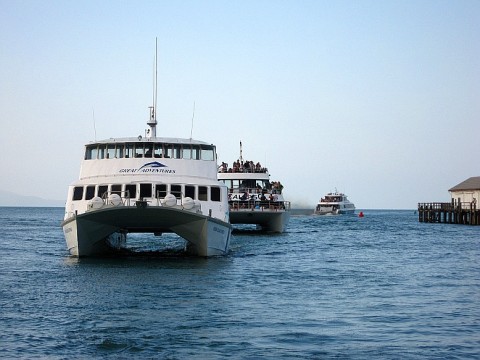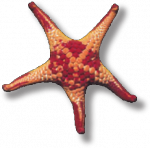Tourism in the Great Barrier Reef

The Great Barrier Reef (GBR) is an iconic international tourism attraction. A thriving, significant tourism industry has been a part of the Marine Park since the early 1930s when tourism resorts became popular. Since then, the industry has changed and expanded considerably, diversifying into a wide range of new products and experiences. It is now estimated that GBR tourism employs more than 64,000 people (full-time equivalent) and contributes $5.2 billion annually to the Australian economy1. The diversity of Reef tourism products, services and activities today include charter fishing, bareboat sailing, cruise shipping, helicopter and seaplane rides, water sports, whale watching and kayak tours, as well as a plethora of SCUBA dive and snorkelling options for which the GBR is well renowned.
Tourism activities and experiences in the GBR are set in a range of different environments including mangroves and coastal habitats, beaches and islands, as well as inshore, mid-shelf and outer coral reefs. The expected quality of these environments plays an important role in tourists’ travel decision making, and tourists’ perceptions of the health and aesthetic qualities of the locations they visit can strongly influence their satisfaction and likelihood of returning or recommending the destination to others. An understanding of how tourists perceive the GBR, how they experience it, and how their perceptions are formed is becoming increasingly important for tourism operators and Reef managers aiming to provide outstanding Reef tourism experiences that are managed sustainably.
The SELTMP 2014: Tourism in the Great Barrier Reef technical report presents a snapshot of socio-economic data and indicators relevant to the current state of tourism visitation and the tourism industry in the Great Barrier Reef region. A wide range of secondary data is compiled, showing patterns of regional tourism visitation, industry use and activities in the GBR. Primary data are included from SELTMP surveys conducted over mid 2013, representing 2788 tourists who visited the GBR region (from Cooktown to Bundaberg), as well as 119 GBR tourism operations. These survey data provide new insights into tourists’ and tourism operators’ relationship, values and perceptions of the Reef, and will become an important baseline for monitoring and understanding industry trends, and the potential impacts of changes in the environment and society.
NEW: Link to 2014 technical report:
Link to 1pp Factsheet:
Link to 2013 technical report:
1Deliotte Access Economics (2013). Economic Contribution of the Great Barrier Reef. Great Barrier Reef Marine Park Authority, Townsville.



